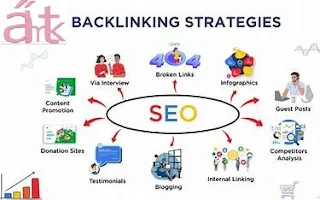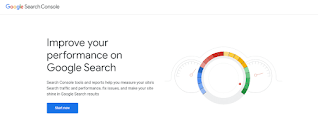Discover the top 10 free online blog editing and SEO tools to enhance your content and optimize for search engines. Learn how these tools can help improve your website's visibility and ranking.
Introduction
In today’s digital age, creating high-quality content isn't enough to guarantee traffic to your blog or website. To rank higher in search engines, optimizing content with SEO (Search Engine Optimization) is crucial. Several free online tools can help bloggers and website owners edit their posts and improve SEO performance. In this article, we will look at the top 10 free blog editing and SEO tools that can elevate your website’s visibility and drive more organic traffic.
1. Grammarly
Grammarly is one of the best online editing tools for bloggers, offering real-time grammar, spelling, and punctuation checks. It also provides readability scores and suggestions to improve the tone and clarity of your content. For SEO purposes, Grammarly helps ensure your writing is error-free and polished, which contributes to higher engagement and better search engine rankings.
Features:
- Grammar and spelling correction
- Readability improvements
- Tone detection
- Plagiarism detection (premium)
SEO Benefit: Clear, error-free writing contributes to higher user engagement and lower bounce rates, indirectly improving SEO.
2. Yoast SEO
Yoast SEO is a WordPress plugin that makes SEO optimization easy for blog posts. This tool provides a step-by-step checklist for optimizing each piece of content for keywords, meta descriptions, readability, and more.
Features:
- Real-time content analysis
- Focus keyword optimization
- Readability checker
- XML sitemaps
SEO Benefit: Helps optimize your content for search engines, improves readability, and ensures you’re using the right keywords.
3. Hemingway Editor
Hemingway Editor is an excellent tool for improving the readability of your blog posts. It highlights complex sentences and phrases that are hard to read, making your writing more digestible and user-friendly.
Features:
- Readability grading
- Highlight complex sentences and phrases
- Simplifies writing for better clarity
SEO Benefit: Improved readability encourages users to spend more time on your page, reducing bounce rates and boosting SEO performance.
4. Google Search Console
Google Search Console is an essential SEO tool that helps you monitor and maintain your website’s presence in Google search results. You can use this tool to check which queries bring traffic to your site, find out your top-performing pages, and identify any issues affecting your site's visibility.
Features:
- Performance reports
- Index coverage reports
- Search query analysis
- Mobile usability insights

SEO Benefit: Provides insights into how Google views your site and offers recommendations to improve ranking and performance.
5. Ubersuggest
Ubersuggest is a free SEO tool developed by Neil Patel. It offers keyword research, backlink data, and website traffic analytics, all in one platform. It is especially useful for bloggers who want to improve their organic traffic and visibility.
Features:
- Keyword suggestions
- Backlink analysis
- Competitor analysis
- SEO audit
SEO Benefit: Helps identify high-traffic keywords and provides SEO audit reports to optimize your blog.
Top 10 Free Online Music and Tune Editing Websites & AI Tools for Musicians
Top 10 Free Photo and Video Editing Websites in 2024
Top 10 Free Online AI Video Making Websites in 2024
6. Canva
Canva is a free online design tool that allows you to create custom images, infographics, and graphics for your blog posts. Well-designed images can increase the shareability and engagement of your content, making it a great visual companion for bloggers.
Features:
- Customizable templates
- Image and infographic creation
- Free stock photos
- Social media graphics
SEO Benefit: Attractive visuals increase user engagement, which can lead to more social shares and better SEO.
7. Ahrefs Webmaster Tools
Ahrefs Webmaster Tools offers a free SEO toolkit for website owners. It provides essential features such as backlink monitoring, SEO audits, and site performance analysis.
Features:
- Backlink analysis
- Keyword tracking
- Site audit
- Competitor analysis
SEO Benefit: Helps identify opportunities for improving on-page and off-page SEO, and monitors your backlink profile.
8. Surfer SEO
Surfer SEO is a tool that helps you optimize your content for specific keywords by analyzing top-performing pages for those keywords. It gives you data-driven suggestions on how to structure your content, including keyword density, word count, and headings.
Features:
- Content optimization suggestions
- SERP analysis
- SEO audits
- Keyword research
SEO Benefit: Improves your content's ranking potential by ensuring it meets SEO guidelines based on real-time data.
9. MozBar
MozBar is a free Chrome extension by Moz that provides instant SEO insights on any web page or SERP. It helps you analyze your competitors’ SEO metrics, including page authority, domain authority, and backlink profiles.
Features:
- Page and domain authority analysis
- Keyword analysis
- SERP overlays
- Backlink insights
SEO Benefit: MozBar allows you to analyze your competitors' SEO strategies and optimize your content accordingly.
10. Screaming Frog SEO Spider
Screaming Frog is a free desktop tool that helps you crawl and analyze your website for SEO issues. It provides detailed insights into broken links, page titles, meta descriptions, and other on-page SEO factors.
Features:
- Website crawling
- Broken link detection
- Meta tag analysis
- Sitemap generation
SEO Benefit: Screaming Frog helps ensure that your site is free of SEO errors that could negatively impact your rankings.
Conclusion
Using the right blog editing and SEO tools can significantly improve the quality of your content and your website's visibility in search engines. Each of the 10 tools mentioned in this article offers unique features that are essential for creating well-optimized content, improving your website’s performance, and ultimately increasing traffic. Whether you’re a beginner or an experienced blogger, leveraging these tools will help you create high-quality content that ranks well and engages your audience.
- Free blog editing tools
- Best SEO tools for bloggers
- Online content editing tools
- Top free SEO software
- Blog optimization tools
- Keyword research tools
- Blogging tools for SEO
- Best tools for blog writers
- SEO audit tools for websites
- Free content optimization

.png)


























.png)
.png)






